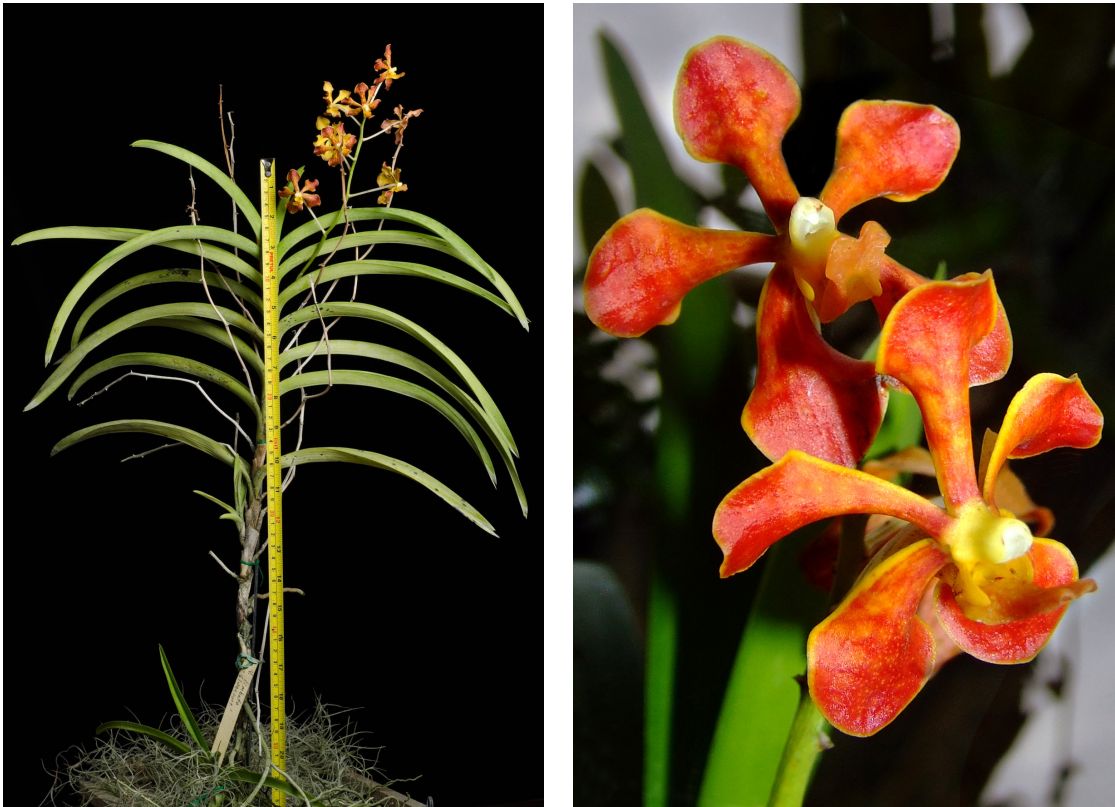

Vanda mariae Motes 2016
Comparison between V limbata [left] and V mariae [right]
Photos by © Martin Motes and © Greg Allikas /TYPE Drawing by Wes Jergen © Martin Motes

 ">
">  LATER
LATER
Common Name Mary's Vanda [Named for Mary Motes American Nurserywoman and Author current]
Flower Size
Found in the Philippines without locality as a just medium sized, hot to warm growing, climbing monopodial epiphyte with an erect, climbing stem carrying glabrous, waxy, sessile, distichous, linear, conduplicate, praemorse apically leaves that blooms in the later spring on an axillary, erect, 6 to 8" [15 to 20 cm] long, loosely 6 to 11 flowered inflorescence.
"Similar to Vanda limbata but V mariae is a smaller plant with harder and more deeply furrowed leaves, The flowers, while superficially similar to those of V. limbata, are usually yellow, overlaid with reddish brown, as opposed to the solid deep chestnut brown of typical V. limbata . Unlike the Javanese V. limbata, in which there is a barely discernible pattern of underlying tessellation, the sepals and petals of the Philippine plants are distinctly tessellated . In V. limbata the violet mid-lobe is narrow and straight. In the Philippine plants the yellow overlaid with red midlobe is deltoid but rolled at the margins, making it somewhat resemble V. limbata’s lip. Vanda limbata has a single prominent callus at the base of the mid-lobe and two small calli on the column foot at the entrance to the spur. In the Philippine plants there are two small calli at the base of the mid-lobe and the calli on the column foot are lacking. The mid-lobe of V. limbata is smooth while the mid-lobe of the Philippine flowers is adorned with three low ridges." Martin Motes 2016
Synonyms
References W3 Tropicos, Kew Monocot list , IPNI ;
* Lankesteriana 16: 337 Motes 2016 Drawing/ photo fide
--------------------------------------------------------------------------------------------------------------------------